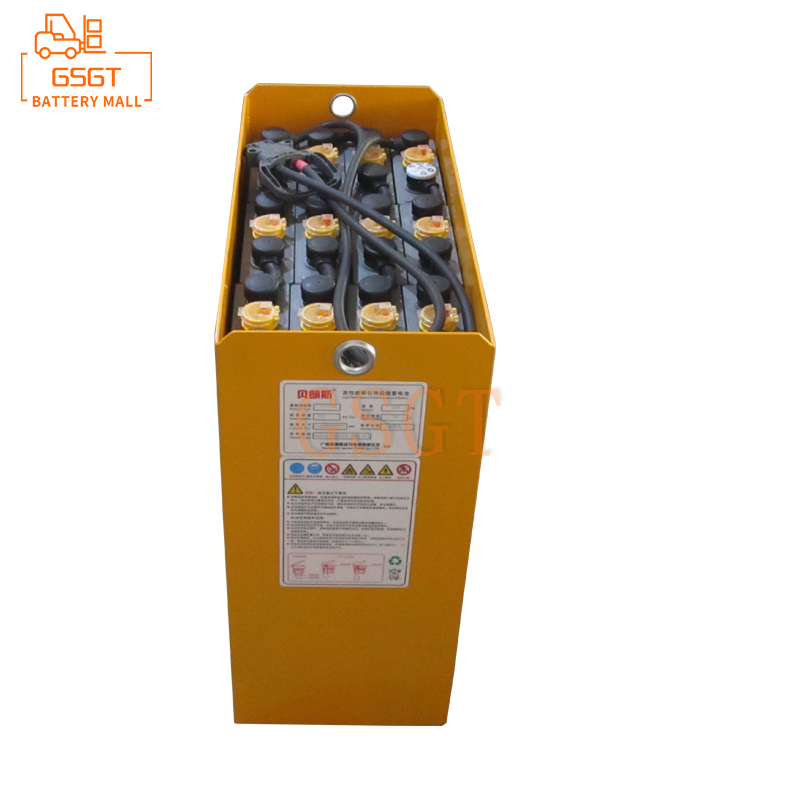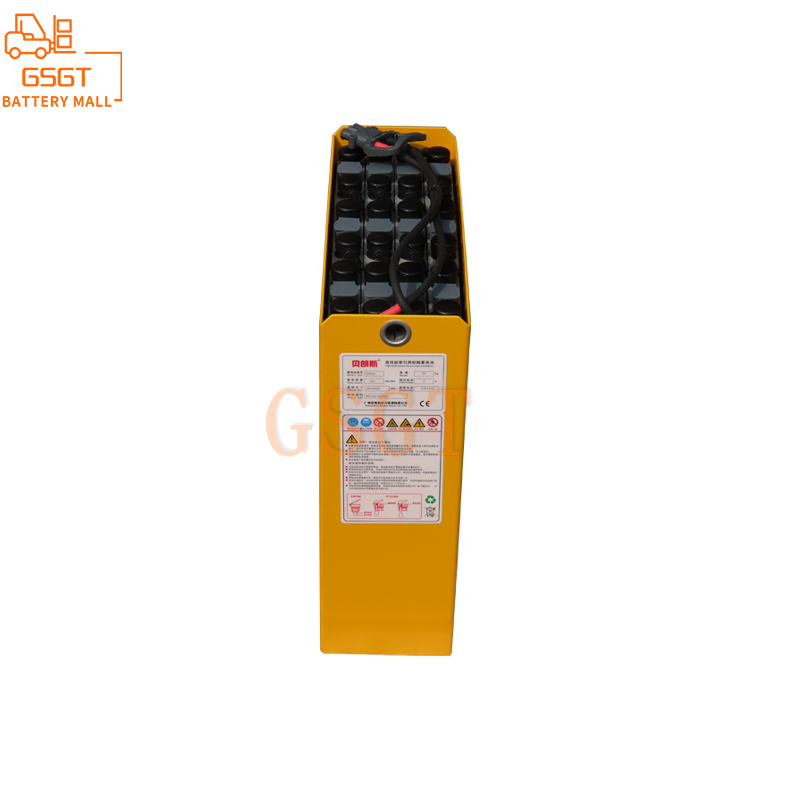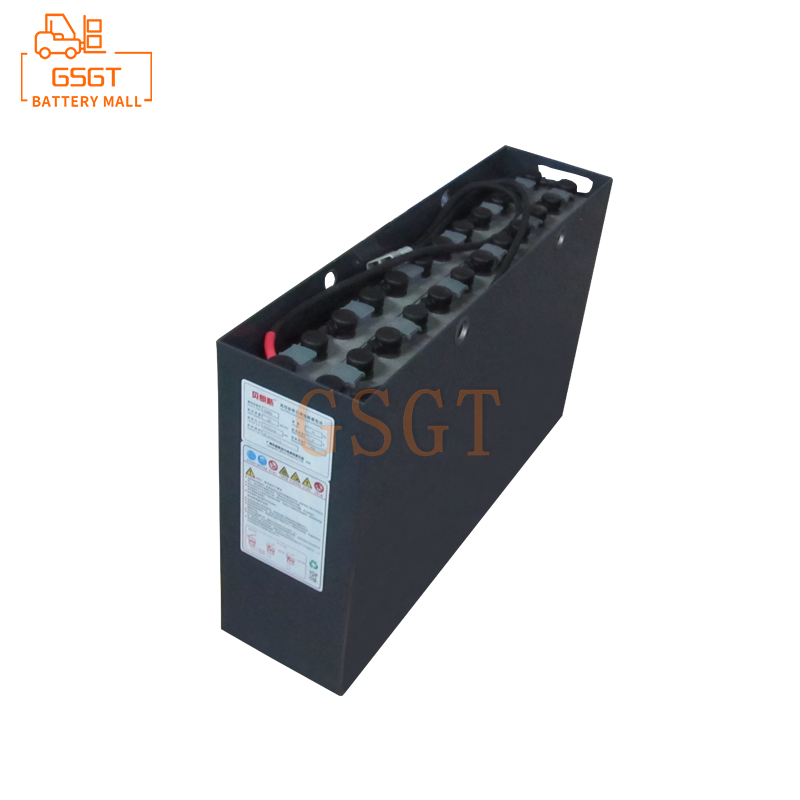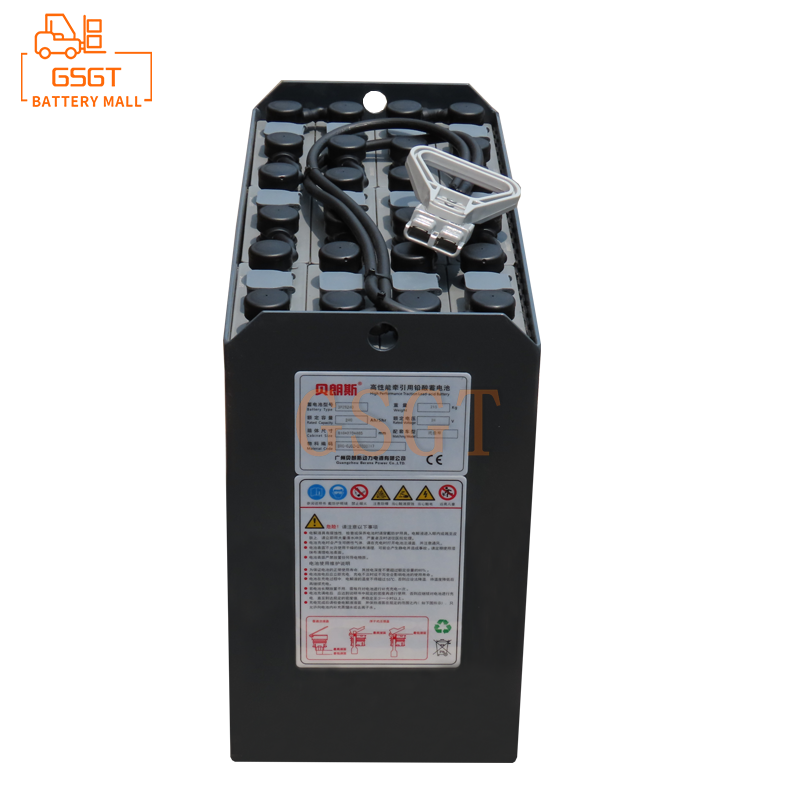Time:2025-06-06 10:27:14
Browse:597
In the modern logistics and warehousing field, forklifts, as indispensable handling equipment, the performance and lifespan of their power source - battery packs - directly affect the production efficiency and operating costs of enterprises. In the maintenance and management of battery packs, equalization charging is a crucial but often overlooked operation. This article will deeply explore the significance of equalization charging for forklift battery packs and elaborate on its operation steps in detail, providing professional guidance with reference value for relevant practitioners.
1. Working Principle and Common Problems of Forklift Battery Packs
The battery packs used in forklifts are usually lead-acid batteries, and their working principle is based on REDOX reactions. During the discharge process, lead dioxide at the positive electrode and lead at the negative electrode react with sulfuric acid in the electrolyte, converting chemical energy into electrical energy. During charging, the external electrical energy prompts the reaction to proceed in reverse, achieving the conversion from electrical energy to chemical energy.
In the actual usage process, forklift battery packs will encounter many problems. On the one hand, due to the subtle differences among individual batteries in terms of production processes and material properties, even batteries from the same batch may not have exactly the same parameters such as capacity and internal resistance. On the other hand, the operating conditions of forklifts are complex. Different loads, traveling speeds and working hours can lead to inconsistent charging and discharging levels of each individual battery. These factors work together to cause an imbalance in parameters such as voltage and capacity among individual cells in the battery pack after a period of use.
2. The Importance of Equalization Charging
(1) Extend the service life of the battery pack
When the individual cells in the battery pack are unbalanced, those with lower capacity or higher internal resistance will reach the charging and discharging limits prematurely. During the charging process, batteries with lower capacity are fully charged first. If charging continues, they will suffer from overcharging, leading to problems such as sulfation of the plates and drying up of the electrolyte. During the discharge process, it will be completely discharged first. If other batteries continue to discharge, it will be recharged in the opposite direction, causing irreversible damage. Through equalization charging, the voltage and capacity of each individual battery can tend to be consistent, avoiding premature damage to individual batteries and thus effectively extending the service life of the entire battery pack. According to statistics, the service life of battery packs that undergo regular equalization charging can be extended by 20% to 30% compared to those that do not.
(2) Enhance the overall performance of the battery pack
An unbalanced battery pack will affect both its output power and endurance. Because the performance of the entire battery pack depends on the individual battery with the poorest performance, just like the barrel principle, the shortest plank determines the water capacity of the barrel. Equalization charging can optimize the performance of each individual battery, enabling them to work in coordination, fully exploit the potential of the battery pack, enhance the power output and driving range of forklifts, and thereby improve the efficiency of logistics operations.
(3) Reduce maintenance costs and safety risks
Frequent replacement of damaged individual batteries or entire battery packs will undoubtedly increase the operating costs of enterprises. Reducing the frequency of battery damage through equalization charging can effectively lower maintenance costs. In addition, unbalanced batteries may cause safety hazards such as overheating, gas expansion and even explosion during overcharging and overdischarging. Equalization charging helps eliminate these potential risks and ensures the safety of the forklift operation environment.
3. Operating Steps for Equalization Charging
(1) Preparatory work
Check the equipment: Before performing equalization charging, carefully inspect whether the charging equipment is operating normally, including whether the voltage and current displays of the charger are accurate, and whether the charging cables are damaged or aged. At the same time, ensure that the connection lines of the forklift battery pack are firm, without any looseness or short circuit.
Clean the battery: Use a clean damp cloth to wipe the surface of the battery to remove dust, electrolyte residues, etc. Keep the battery surface clean and dry to prevent self-discharge or short circuit caused by conductive substances on the surface.
Test battery status: Use professional battery testing equipment to measure parameters such as voltage, internal resistance, and electrolyte density of each individual battery, and record them. Based on these data, the degree of imbalance of the battery pack is determined to provide a basis for subsequent equalization charging.
(2) Start charging
Connect the charger: Connect the positive terminal of the charger to the positive terminal of the battery pack and the negative terminal to the negative terminal, making sure the connection is secure.
Set charging parameters: According to the specifications and manual of the battery pack, set the appropriate charging voltage and current. Generally speaking, the voltage of equalization charging should be slightly higher than that of ordinary charging, and the charging current should not be too large to avoid causing damage to the battery.
Start the charger: After setting the parameters, start the charger and begin equalization charging. During the charging process, it is necessary to closely observe the voltage and current displays of the charger, as well as the battery's heating and exhaust conditions.
(3) Monitoring of the charging process
Regular measurement: During the equalization charging process, measure the voltage of each individual battery every 30 minutes to 1 hour and record the data. By comparing the voltage data of different time periods, the charging progress and balancing situation of the battery can be understood.
Observe the battery status: Pay attention to whether there are any abnormal phenomena such as bulges or leakage on the battery surface, and whether the battery is abnormally hot or has a pungent smell. If any abnormal situation is found, charging should be stopped immediately, the cause checked and corresponding measures taken.
Adjust charging parameters: Based on the measurement data and battery status, adjust the charging voltage and current in a timely manner. If it is found that the voltage of individual batteries rises slowly or excessively, the resistance of the charging circuit of that battery can be appropriately adjusted to promote its balanced charging.
(4) End charging
To determine the completion of charging: When the voltage of each individual battery reaches the set equalization charging voltage and does not rise continuously for 2 to 3 hours, and the density of the battery's electrolyte also reaches the specified value, it can be considered that the equalization charging is completed.
Stop charging: First, turn off the power of the charger, and then disconnect the connection cable between the charger and the battery pack. When disconnecting, pay attention to safety to avoid electric shock or the generation of sparks.
Subsequent processing: After the charging is completed, wait for the battery to cool to room temperature, then measure the voltage of each individual battery, the density of the electrolyte and other parameters again and record them. Compare the data before and after charging to evaluate the effect of equalization charging. If there is still a significant imbalance, it can be considered to perform equalization charging again.
4. Precautions for Equalization Charging
Safety first: When performing equalization charging operations, it is essential to strictly follow the safety operation procedures. The charging area should be well-ventilated and kept away from flammable and explosive items. Smoking or using open flames is strictly prohibited in the charging area. Operators should wear insulating gloves, goggles and other protective equipment to prevent electric shock and injury from electrolyte splashing.
Avoid overcharging: Although equalization charging requires a proper increase in the charging voltage, it is important to avoid overcharging. Overcharging will accelerate the aging and damage of batteries. Therefore, it is necessary to accurately set the charging parameters and closely monitor the charging process.
Regular: Equalization charging should be carried out regularly. Generally, it is recommended to perform equalization charging once every 10 to 15 regular charges. The specific interval time can be adjusted according to factors such as the usage frequency of the forklift and the working environment.
Professional operation: Equalization charging involves professional electrical knowledge and operational skills. It is recommended that it be operated by personnel who have received professional training. If there are any questions or problems regarding the operation process, professional technicians should be consulted in a timely manner.
In conclusion, the balanced charging of forklift battery packs is of great significance for ensuring battery performance, extending service life, reducing operating costs and guaranteeing operational safety. By mastering the correct operation steps and precautions and conducting regular equalization charging maintenance, the forklift battery pack can always remain in good working condition, providing reliable power support for the enterprise's logistics operations. With the continuous development of the logistics industry, higher requirements will be put forward for the maintenance and management of forklift battery packs. Relevant practitioners should attach importance to maintenance measures such as balanced charging and constantly improve the level of equipment management.

$1105

$1270

$1060

$800

MESSAGE
Professional And Efficient
Security
Affordable Price
Professional Services